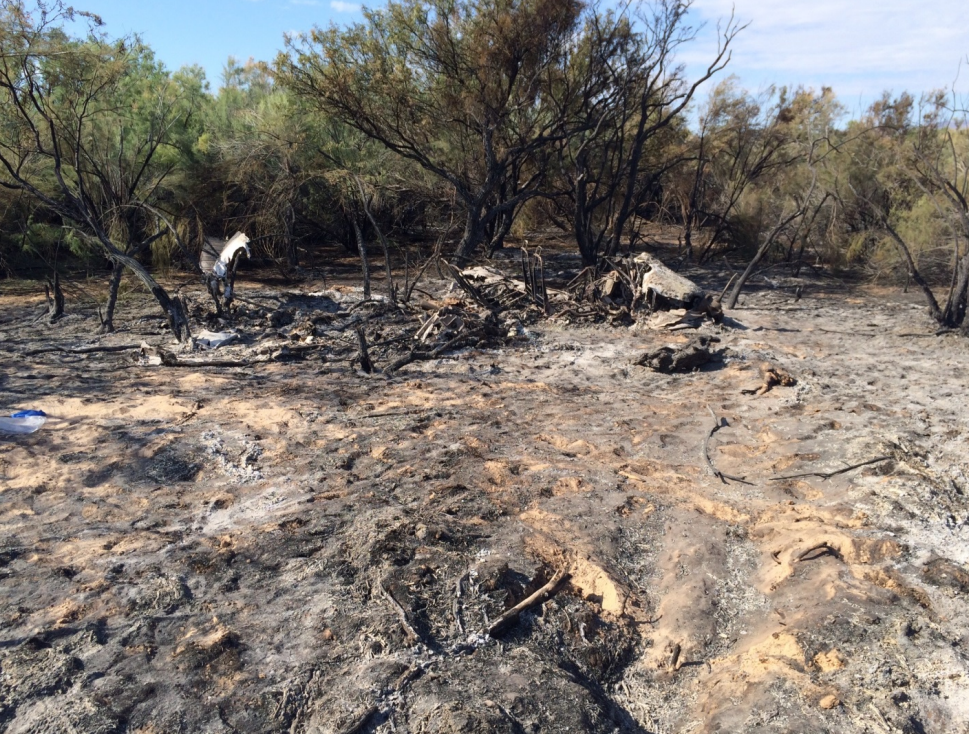
ASN Wikibase Occurrence # 176180
This information is added by users of ASN. Neither ASN nor the Flight Safety Foundation are responsible for the completeness or correctness of this information.
If you feel this information is incomplete or incorrect, you can submit corrected information.
| Date: | Sunday 17 May 2015 |
| Time: | 18:00 |
| Type: |  Rockwell Commander 114 |
| Owner/operator: | Private |
| Registration: | N4775W |
| MSN: | 14105 |
| Year of manufacture: | 1976 |
| Total airframe hrs: | 3436 hours |
| Engine model: | Lycoming IO-540-T4A5D |
| Fatalities: | Fatalities: 3 / Occupants: 4 |
| Aircraft damage: | Destroyed |
| Category: | Accident |
| Location: | SW of Laughlin/Bullhead Intl Airport (KIFP), Laughlin, NV -
 United States of America United States of America
|
| Phase: | Initial climb |
| Nature: | Private |
| Departure airport: | Bullhead City Airport, AZ (IFP) |
| Phoenix-Goodyear Airport, AZ (GYR) | |
| Investigating agency: | NTSB |
| Confidence Rating: |
The private pilot/owner reported that, during the climb to between about 300 and 400 ft above the ground, the engine started running roughly, and the airplane was not accelerating or climbing. The terrain ahead was rising, so the pilot turned right. Due to the low altitude and reduced engine power, the pilot chose to conduct an off-airport landing, during which he attempted to troubleshoot the engine issue without success. As the airplane continued to descend, the pilot saw houses and bushes ahead; he aimed the airplane away from the houses, and the airplane eventually hit trees and terrain about 4.6 nautical miles from the airport. A postimpact engine fire ensued.
Postaccident examination of the engine revealed that the turbocharger was seized and that the exhaust side of the turbowheel was severely eroded, which led to the engine running rough. A review of the airplane's maintenance records revealed that a turbocharger normalization system had been installed on the airplane under a supplemental type certificate (STC) 13 years before the accident. The STC's instructions for continued airworthiness required that the turbocharger normalization system be inspected every 100 hours. However, a review of the airplane's maintenance records revealed that the system had only been inspected once since its installation and that the inspection was completed 6 years before the accident. No other abnormalities were noted with the airframe or engine that would have precluded normal operation. It is likely that the eroded turbowheel would have been detected if the turbocharger normalization system had been inspected as required.
Probable Cause: A partial loss of engine power due to the turbocharger's seizure as a result of a severely worn turbowheel. Contributing to the accident was the failure of the pilot/owner to have the turbo normalization system inspected every 100 hours as required, which allowed erosion on the exhaust side of the turbowheel to go undetected.
Accident investigation:
 |
|
Sources:
NTSB
FAA register: http://registry.faa.gov/aircraftinquiry/NNum_Results.aspx?NNumbertxt=4775W
Location
Images:

Photo(c): NTSB
Revision history:
| Date/time | Contributor | Updates |
|---|---|---|
| 18-May-2015 02:52 | Geno | Added |
| 18-May-2015 15:31 | Geno | Updated [Aircraft type, Registration, Cn, Operator, Source, Narrative] |
| 23-May-2015 15:55 | Geno | Updated [Time, Phase, Departure airport, Destination airport] |
| 23-May-2015 20:30 | Geno | Updated [Total fatalities, Narrative] |
| 21-Dec-2016 19:30 | ASN Update Bot | Updated [Time, Damage, Category, Investigating agency] |
| 09-Jun-2017 05:47 | PiperOnslaught | Updated [Nature, Source, Narrative] |
| 19-Aug-2017 15:11 | ASN Update Bot | Updated [Operator, Other fatalities, Departure airport, Destination airport, Source, Narrative] |
| 06-Mar-2022 18:42 | Captain Adam | Updated [Other fatalities, Location, Departure airport, Destination airport, Source, Narrative, Photo] |
Corrections or additions? ... Edit this accident description
The Aviation Safety Network is an exclusive service provided by:


 ©2024 Flight Safety Foundation
©2024 Flight Safety Foundation